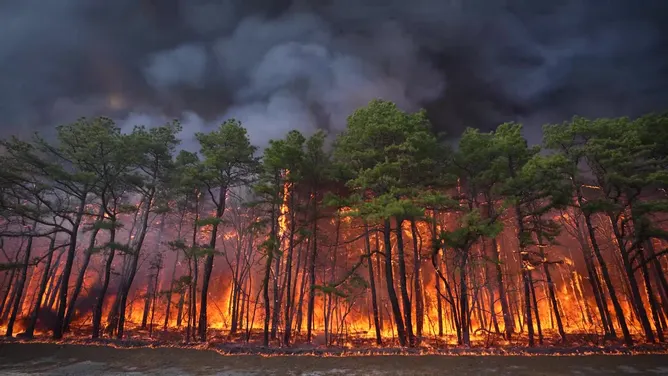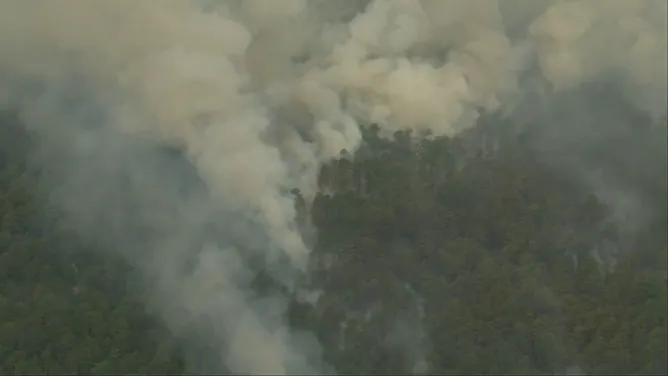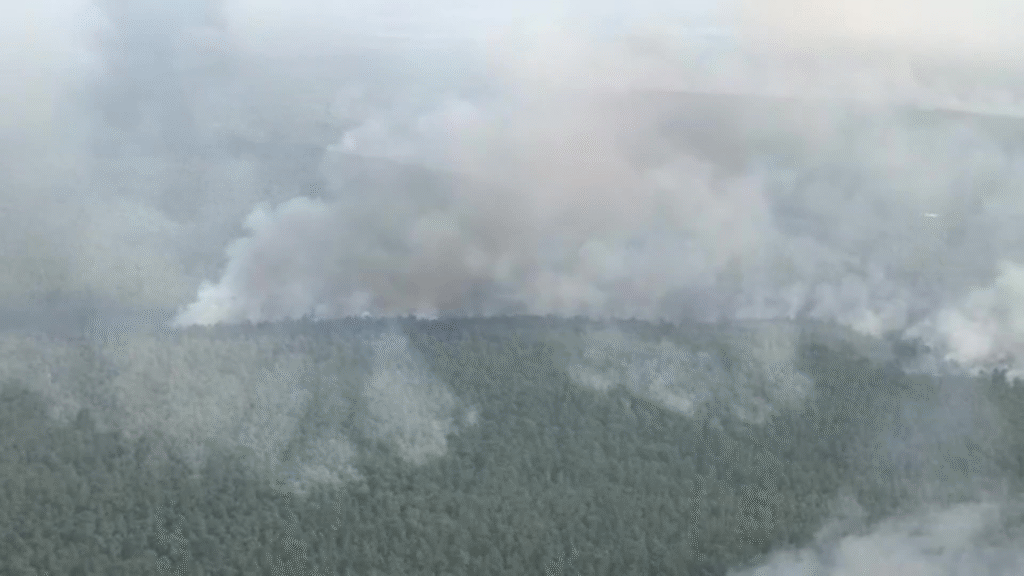
Wharton State Forest fire 2025: Over 10,000 acres burned, evacuation alerts issued. Officials investigate cause as firefighters battle New Jersey’s worst wildfire in decades.
Introduction
A massive wildfire has engulfed Wharton State Forest, New Jersey’s largest protected wilderness area, burning over 10,000 acres since June 5, 2025. The blaze, now 70% contained, forced evacuations in nearby towns and blanketed the region in hazardous smoke. As climate change intensifies wildfire risks, this disaster raises urgent questions about forest management in drought-prone areas.
Fire Status & Containment Efforts
- Start Date: June 5, 2025 (near Atsion Lake)
- Area Affected: 10,200 acres (16 sq. miles)
- Containment: 70% as of June 12
- Firefighters Deployed: 300+ (including NJ Forest Fire Service & federal teams)
Key Challenges:
✔ Extreme Drought: NJ’s driest spring since 2010
✔ Pine Barrens Fuel: Highly flammable pine forests
✔ Wind Shifts: Gusts up to 25 mph spread embers
Evacuations & Air Quality Alerts

- Evacuated Areas: Hammonton, Shamong, and 500+ homes
- Shelters Opened: 3 schools turned into relief centers
- Air Quality Index (AQI): Reached “hazardous” 325 in Philadelphia (June 8)
Officials urge vulnerable groups to stay indoors until smoke clears.
Investigating the Cause
While the fire’s origin remains under probe, early theories include:
- Human Activity: Campfire or discarded cigarette
- Electrical Fault: Power lines in high-wind zones
- Arson: Unconfirmed but not ruled out
NJ Governor Phil Murphy called it a “wake-up call for climate resilience.”
Ecological Impact & Wildlife Threat
Wharton State Forest is home to rare species like the bog turtle and pine snake. Biologists report:
- 50+ deer fatalities (per NJ Wildlife Dept.)
- Critical habitats destroyed in Pygmy Pine Plains
- Long-term recovery: May take 20+ years for some areas
How Climate Change Played a Role
- Record Low Rainfall: 60% below average (March-May 2025)
- Earlier Fire Season: Typically peaks in July
- Soil Moisture: Lowest since 1960s (NASA data)
Experts warn such fires could become annual events.
Public Response & Donations
- GoFundMe Campaigns: $200K+ raised for displaced families
- Volunteer Efforts: Locals delivering masks & water to firefighters
- Social Media: #NJWildfire trends with 50K+ posts
Lessons for Future Prevention

Officials propose:
✔ Stricter campfire bans during droughts
✔ Expanded prescribed burns to reduce fuel load
✔ Early warning systems for fire-prone towns
Conclusion: A Fragile Recovery Begins
While the Wharton State Forest fire is nearing containment, its scars will linger. With climate models predicting hotter, drier summers, New Jersey must rethink wildfire preparedness—or face repeat disasters.
No responses yet